Product Description
Simple and Powerful, Detrum Blitz DT9 is a 2.4GHz 9-channel smart transmitter with telemetry and programing capabilities. With one transmitter, you can take the full control of your flying from all aspects, whether it is ESC settings, gyro receiver programming, BNP with various types of receivers or wireless training.with full telemetry function,the blitz Dt9 can receive temperature , altitude,GPS,voltage,current and telemetry data ,to keep you motre connected to your flying than ever before ,The blitz DT9 also works with all detrum stablizter receiver and back the telemetry data
Experience the latest Detrum Blitz!
KEY FEATURES
—9 fully-proportional channels
—Model type: airplane, helicopter, multi-rotor, and glider
—Frame rate: 2.6ms
—Can store up to 250 models
—Synthesized voice broadcasting
—Vibration alert for alarm conditions and low battery
—Trainer system
—High resolution 192*96 backlit LCD screen
—Dual antenna diversity
—Multiple flight mode settings
—Telemetry
—4 stick modes
—Fail-safe
—Audio interface
—Set the programming parameters of ESC online by this transmitter
—Set the programming parameters of stabilized receiver online by this transmitter
—SD card support for backing up files, firmware update, and import/export model data
—3-position switches: 6
—2-position switches: 1
—Momentary switches: 1
—Knobs: 2
—Thumbwheels: 2
—Digital trims: 6
—Roll the scroll wheel to move through the screen content or change programming values. Press the scroll wheel to make a selection
—End point adjustment
—Sub Trim adjustment
—Channel monitoring
—Programmable mixes
—7.4V 3000mAh Li-Po rechargeable battery
—Charge online
—Superior ergonomics that fit the way you fly
—The stick lever tension can be adjusted
—4096 high section precision sticks
—2 timers
Airplane
—Servo delay
—Throttle hold
—Programmable mixings
—Throttle to Balance mixing
—Veer to Elevator mixing
—V-tail mixing
—Delta mixing
—Flaperon mixing
—3 tail types: normal, V-tail, and delta
—9-point elevator curves
—9-point throttle curves
—9-point rudder curves
—9-point aileron curves
Helicopter
—Servo delay
—Throttle hold
—Swash mixing
—9-point elevator curves
—9-point throttle curves
—9-point rudder curves
—9-point aileron curves
Specifications
|
Number of Channels |
9 |
|
Modulation / Protocol |
DSSS&FHSS |
|
Band |
2.4GHz |
|
Frame Rate |
2.6ms |
|
Telemetry |
Yes |
|
Voice Alerts |
Yes |
|
SD Card Support |
Yes |
|
Upgradeable Firmware |
Yes |
|
Trainer System |
Yes (both wired and wireless) |
|
ESC Parameter Setting Support |
Yes |
|
Stabilized Receiver Setting Support |
Yes |
|
Black Box |
Yes |
|
Built-in Charging Module |
Yes |
|
Battery |
7.4V 3000mAh Li-Po (included) |
|
Charging Voltage |
DC 12V/1.5A |
|
Consuming Current |
< 300mA |
|
Size |
204×246×122mm |
|
Net Weight |
693g (without battery) /834g (with battery) |
SR86A-G smart receiver with GPS
Features
Return Home
Adding path control based on the auto-recovery mode, it allows the airplane to automatically plan the path, lead the airplane back to the starting point. Height is controllable during the return flight. You can exit the return mode at any time by waving the return switch, supporting one-button return and signal loss return.
Main Control IC
32-bit high-performance ARM core processor, 6-axis MEMS gyro chipset
Control Algorithm
Original airplane attitude stabilization algorithm and control algorithm. Support normal wing, fly wing, V-tail airplanes, and 3D planes.
Flight Mode
Four flight modes: Gyro off, Normal, Aerobatic, and Auto-Recovery (Auto Balance). You can switch between different modes by the toggle switch.
Adjusting the Gain
Set the gain and other programmable items with matched transmitter.
High Sensitivity
SR86A adopts 2.4GHz direct sequence spread spectrum (DSSS) and multiple frequency-hopping (FHSS) technologies, having high receiving sensitivity and strong anti-interference capability.
Diversity Antenna
By using diversity antenna, combined with the signal detection and switching algorithm, the receiving signal is stable and reliable.
Unique ID Code
Once the binding is made, the ID code is stored in the receiver and no further binding is necessary after restarting the receiver.
Output Signals
8-channel PWM
Specifications
|
Channels |
8-channel |
|
Sensor |
6-axis gyro |
|
Sensitivity |
-97dBm |
|
Output |
PWM (71Hz) |
|
Transmission Range |
More than 1,000 meters on the ground, more than 1,600 meters in the air |
|
Input Voltage |
3.6V ~ 16V |
|
Size |
42.3mm*31mm*13.1mm |
|
Weight |
14g |
Compatible Products
Gavin 8c ,Blitz DT9
Now Blitz-DT9 9CH Smart Transmitter upgraded the color and Style, white color keeps the same.

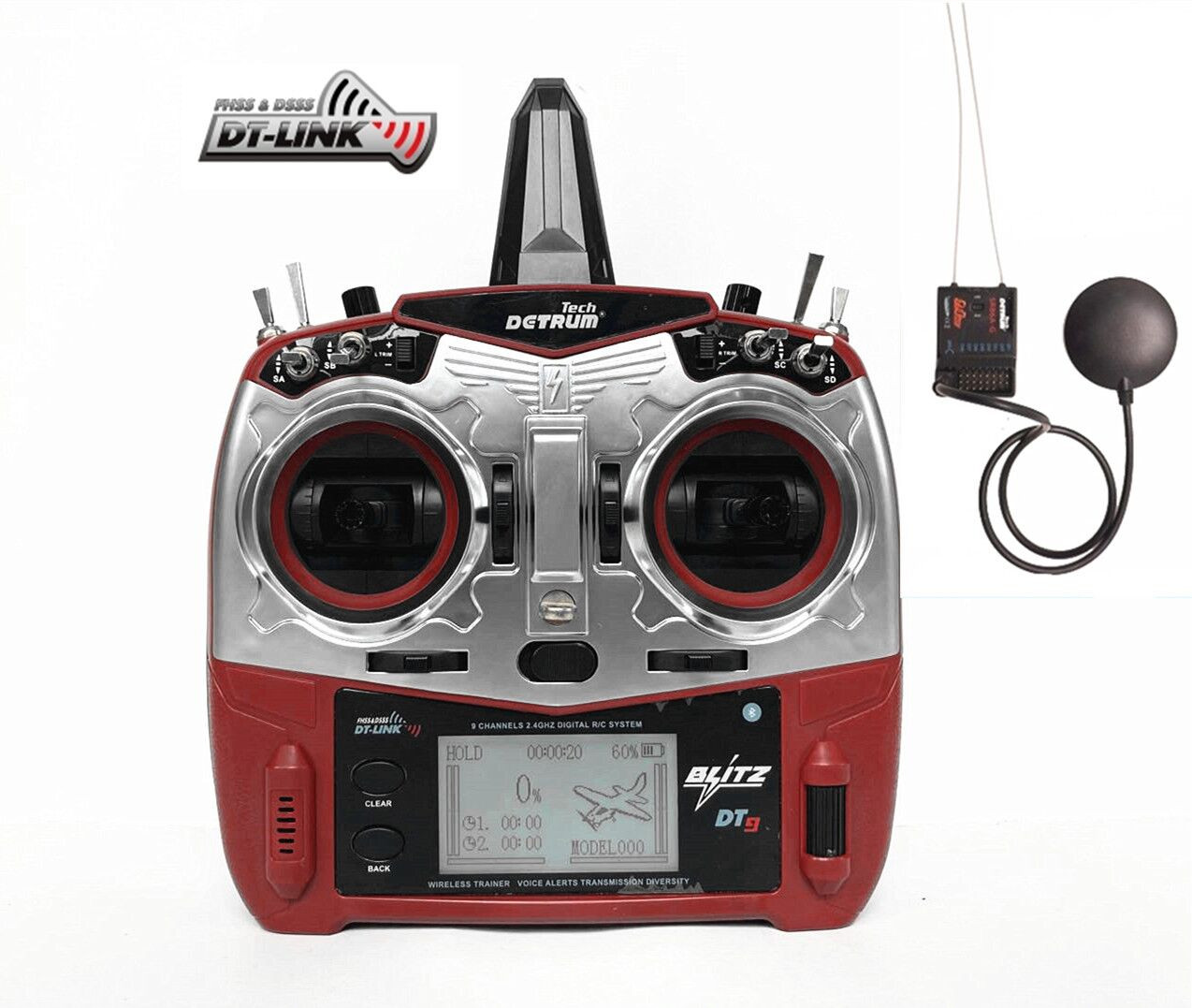
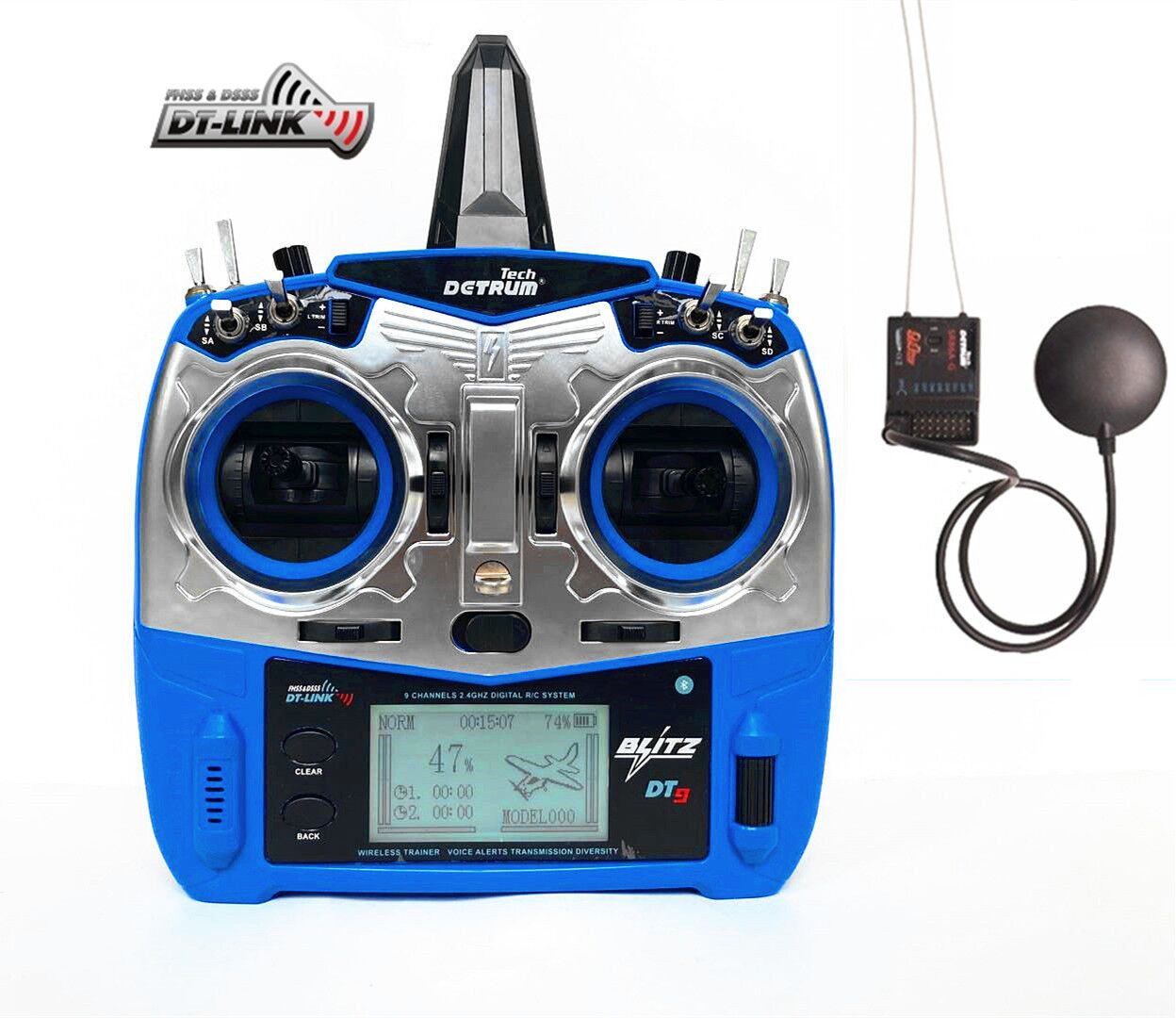












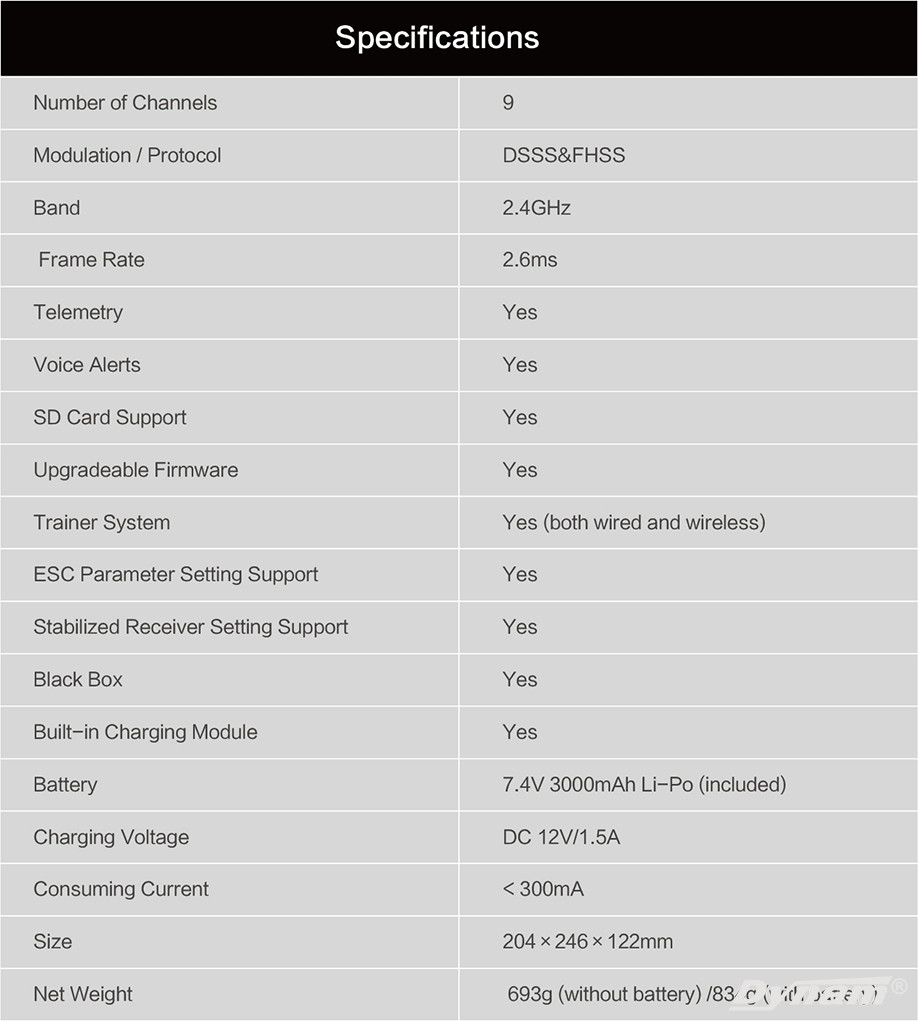


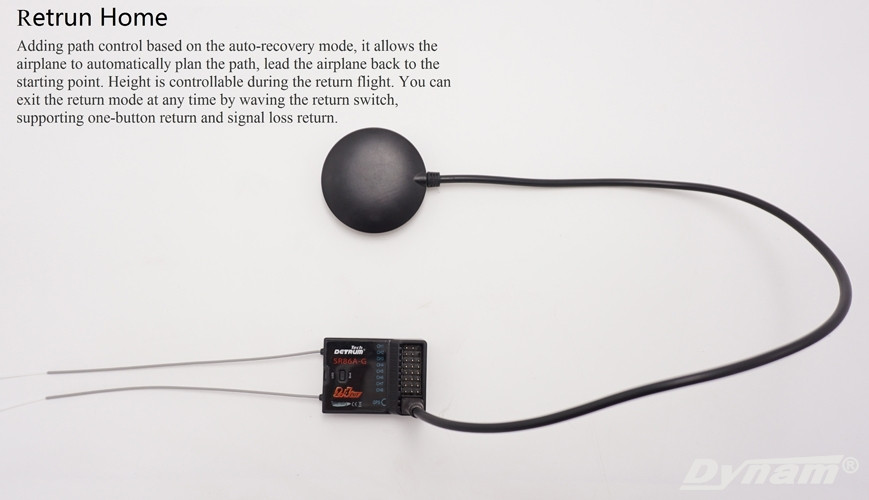
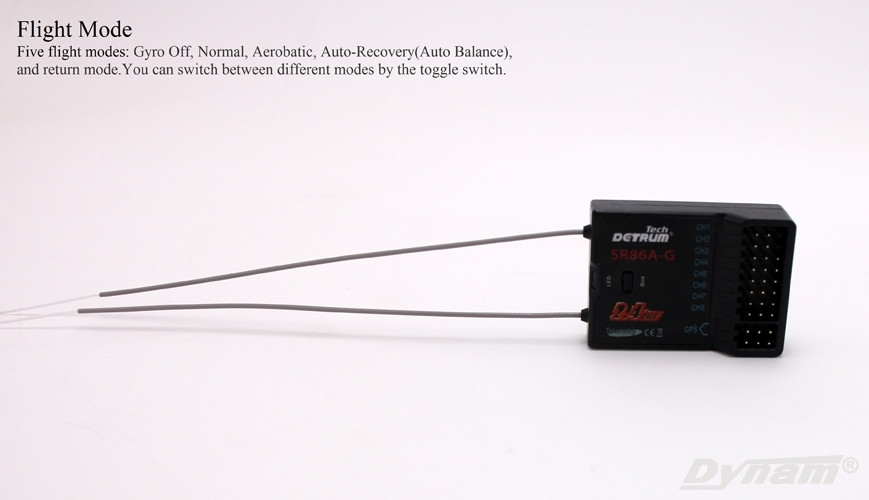

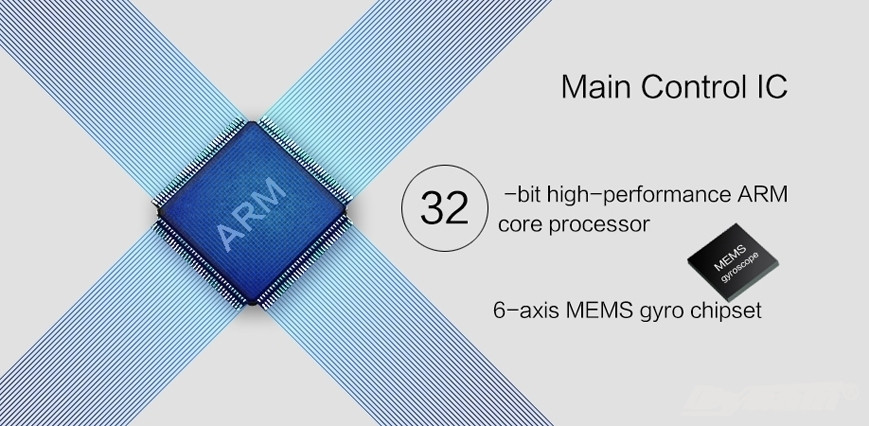
SR86A-G Quick Start Guide
Read the following text to help you quickly use the SR86A-G
1 Installation
Choose one of the following installation directions according to the internal structure of the aircraft. Firmly fit into the fuselage with double-sided tape (Fuel aircraft need to use shock absorption measures). Connect each channel and connect the GPS module.

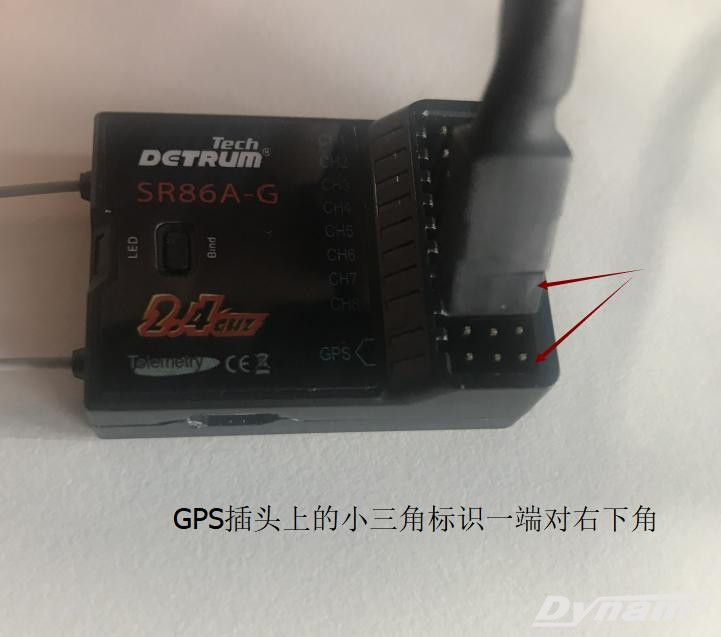
The end of the small triangle icon on the GPS plug corresponds to the lower right corner.
2debug
Connecting battery, bind transmitter and SR86A-G, wait until the initialization is complete after binding. (When the LED on SR86A-G start fast green flashing, it is initializing, the plane needs to remain stationary, after about 2 seconds, the LED is always green).Turn on Blitz-DT9, In the Function Set – Airplane Gyro menu, Item 1 is the selection mode switch, corresponds to the three modes required by the aircraft. Item 5 sets the installation direction. Item 6 Selects Aircraft Type. Items 7 and 8 set the position of the mode switch and return switch for personal habits (Take care to avoid repeating with other switch such as the landing gear, flaps, etc.).
(GAVIN 8C set switch in the function menu AUX2 (mode), AUX3 (return))
Turn the mode switch to Auto-Recovery Mode or normal mode (stabilization). Take the airplane and move it as indicated in the figure below. Observe whether the control of the rudder surface is as shown. If the direction is opposite, please enter Airplane Gyro menu to adjust the corresponding sensitivity direction to achieve the same as the figure, then we can start to fly.
Pick up the plane as shown in the direction of the roll motion to observe whether the aileron action is as shown
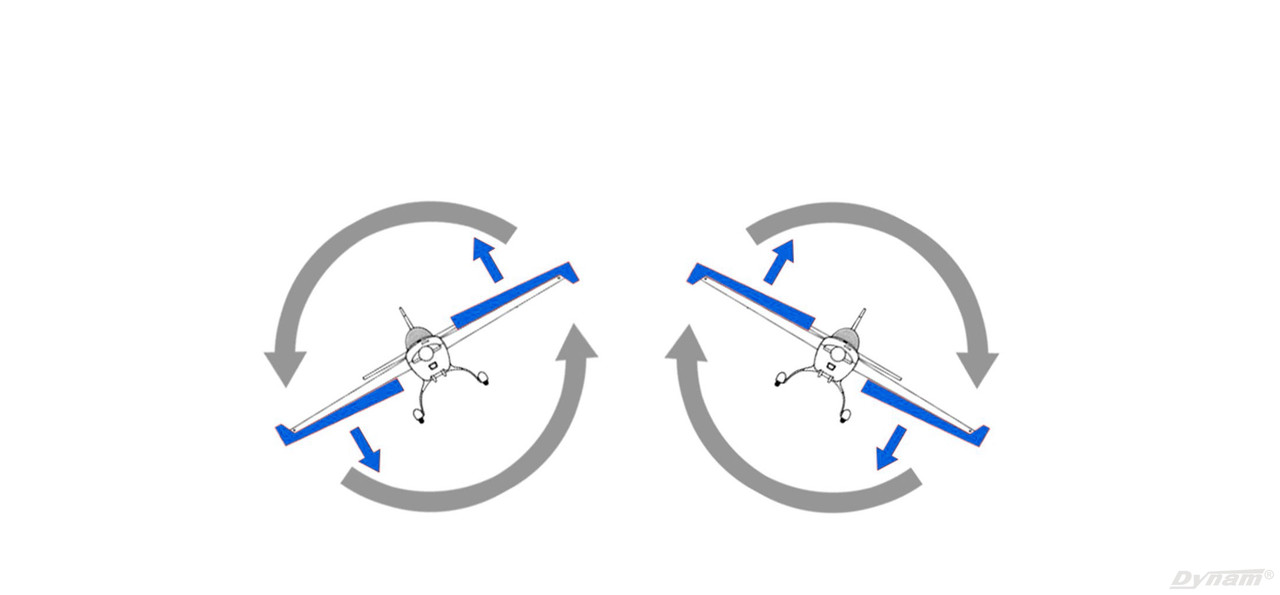
Pick up the plane as shown in the direction of the pitching motion to observe whether the flat tail motion is as shown
Take the plane as shown in the yaw motion to observe whether the vertical tail motion of the aircraft is as shown in the figure.
Note: In the normal (stabilized) mode, we can observe the vertical tail movement, and in the Auto-Recovery mode, the airplane has no vertical tail movement.
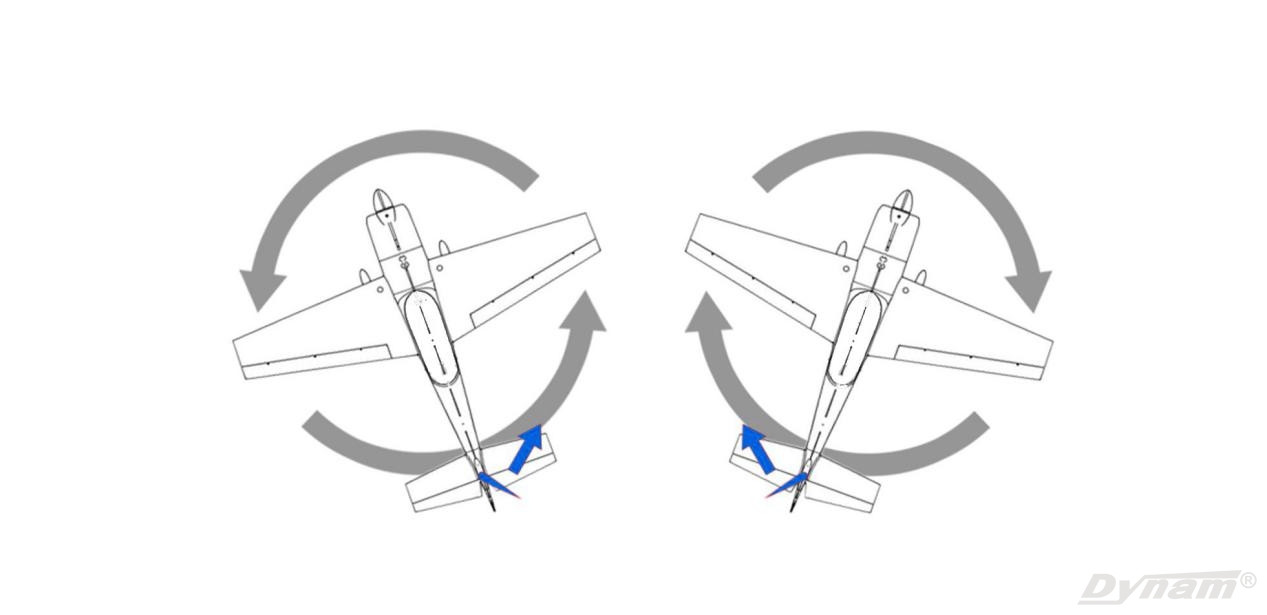
3 test flight
Observe the GPS satellite lock icon in the DT9 monitoring menu, if the icon is unlocked, it means searching for positioning, if the icon is locked, it means that the location is locked to the home point. We can take off at any time.

For the first test flight, we take off in manual mode (gyro off mode). We can switch to normal mode to flight for a moment after rising to high altitude, if there is no abnormality, we switch to Auto-Recovery Mode to flight. Observe whether the aircraft can maintain a stable attitude, altitude, and direction. After the Auto-Recovery Mode is normal, we can dial the return switch, the plane will return home and hover. If the aircraft is too flexible or slow in the Auto-Recovery Mode or return mode, please enter the sensitivity adjustment menu to adjust the sensitivity slightly. And test again to achieve perfect control of the aircraft by SR86A-G
Product Videos
Videos Hide Videos Show Videos
-

Detrum Blitz DT9 Transmitter AIL, ELE, THU, RUD Curve Settings
Simple and Powerful, Detrum Blitz DT9 is a 2.4GHz 9-channel sm...
-

Detrum Blitz DT9 Transmitter Binding with Receiver
Simple and Powerful, Detrum Blitz DT9 is a 2.4GHz 9-channel sm...
-

-

Detrum Blitz DT9 Transmitter Reverse Setting
Simple and Powerful, Detrum Blitz DT9 is a 2.4GHz 9-channel sm...
-

Detrum SR86A-G GPS Autopilot Telemetry Receiver
SR86A-G smart receiver with GPS https://www.dynamrc.com/produ...
 NZD
NZD
 USD
USD
 EURO
EURO
 GBP
GBP
 HKD
HKD
 AUD
AUD
 CAD
CAD
 SGD
SGD
 CHF
CHF























































































